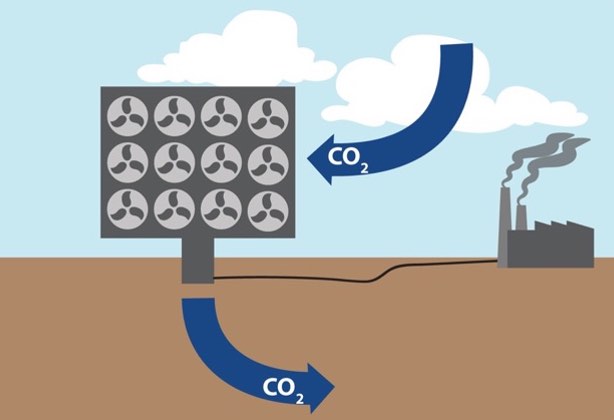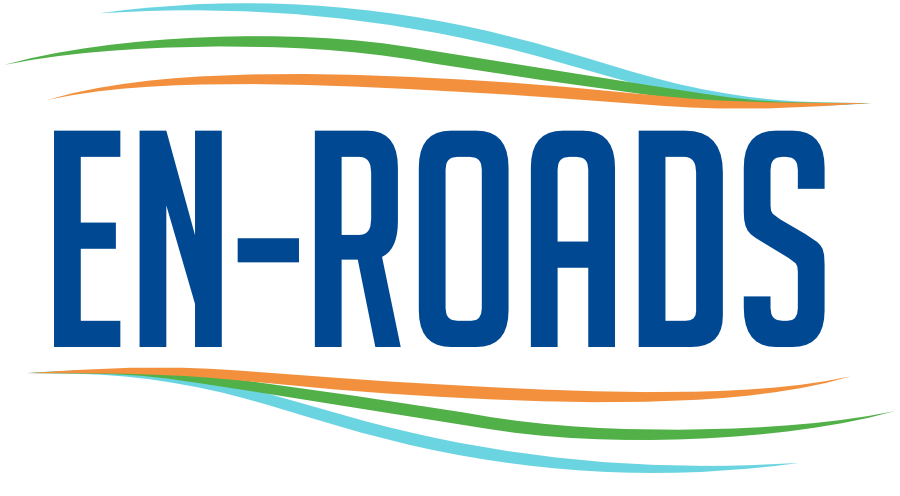 Technological Carbon Dioxide Removal🔗
Technological Carbon Dioxide Removal🔗
Promote the use of carbon dioxide removal technologies like direct air capture and enhanced mineralization. These methods rely on heavy industry to directly remove carbon dioxide from the atmosphere. While these technologies offer promising solutions for reducing atmospheric carbon, they require substantial energy and investment to implement on a large scale.
Examples🔗
- Advancements in various CDR technologies through research and development and government policies.
- Support from businesses, land owners, and the general public to implement such technologies.
Carbon Dioxide Removal Methods🔗
The following methods of technological CO2 removal can be explored in the En-ROADS simulator:
 |
 |
| Direct air carbon capture and storage (DACCS) is an emerging technology that pulls CO2 out of the air, where it is then stored in geological reserves. To get a net removal benefit, the captured carbon must be stored long term. | Enhanced mineralization entails mining specific rocks—like basalt—that can absorb CO2 from the air and converting it to rock for long-term carbon storage. |
Big Messages🔗
Technological Carbon Removal has the potential to pull significant amounts of carbon dioxide out of the atmosphere.
Most of these technologies are still undergoing pilot testing, and do not exist at the level needed to deploy at a large scale.
To be successful, these technologies must store carbon (usually underground) for the indefinite future without leaking back into the atmosphere.
Key Dynamics🔗
Industry scale. View the graph “Bulk Material for Mineralization” to see the scale of industrial production these approaches entail.
Carbon bathtub. CO2 concentration in the atmosphere will continue to increase as long as CO2 emissions exceed CO2 removals, just as the level of water in a bathtub will continue to increase as long as the water entering the tub exceeds the water draining out. Learn more here.
Potential Co-Benefits of CDR Growth🔗
- The scale up of many carbon removal approaches would result in vast new industries and businesses, which would create jobs.
- Enhanced mineralization can benefit soil by reducing its acidity.
Equity Considerations🔗
- Methods like direct air carbon capture and storage would demand large amounts of energy.
- Many of the technological carbon removal approaches have not been developed at scale yet and pose unknown risks and consequences to the communities they are situated within.
Videos🔗
Afforestation & Technological CO2 Removal
Slider Settings🔗
| status quo | low growth | medium growth | high growth | |
|---|---|---|---|---|
| Percent of maximum potential | 0% to +10% | +10% to +40% | +40% to +70% | +70% to +100% |
DACCS: The default settings for the maximum potential of DACCS technological carbon removal (“% of max potential”) are sourced from the midpoint of the ranges of the 2018 ‘Greenhouse gas removal’ report by the Royal Society (Table 2, Chapter 2).
For higher removal levels, one can adjust the “Carbon dioxide removal maximum” settings within the Assumptions view, up to the highest end of the range sourced from the same report.
Model Structure🔗
The methods of CO2 removal included are modeled independently. They each vary in their maximum sequestration potential, the year they might start to scale up, how long it takes them to be phased in, and the carbon leakage rate over time (stored carbon is not always permanent).
Enhanced mineralization: En-ROADS represents the time it takes for the practice of enhanced mineralization to be adopted and the infrastructure to be built. After adoption, the gross amount of CO2 removed by mineralization is a function of the land area the ground rock is applied to, the amount of rock per area, and the absorption potential of the type of rock. The net CO2 captured is the gross amount of CO2 removed minus the emissions from energy used to grind and spread the rock. Users can adjust all these parameters in the Assumptions menu.
FAQs🔗
- Where can I learn more about the different CDR types? Follow the links to find detailed fact sheets on these CDR types:
Please visit support.climateinteractive.org for additional inquiries and support.
